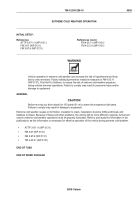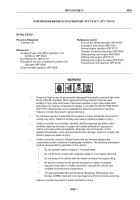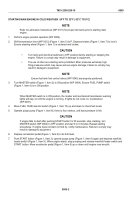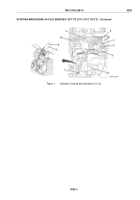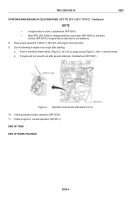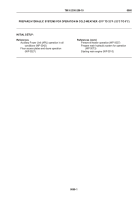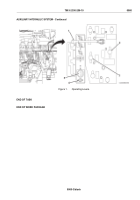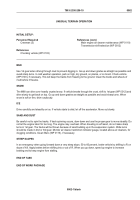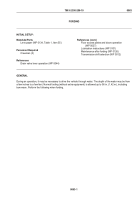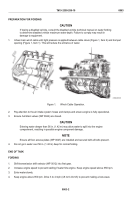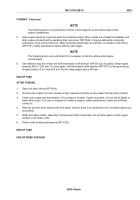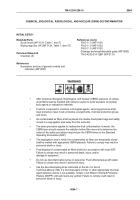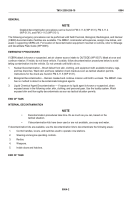TM-9-2350-256-10 - Page 325 of 796
EXTREME HOT WEATHER OPERATION
INITIAL SETUP:
Personnel Required
Crewman (3)
References
FM 4-25.11 (WP 0131)
Operator troubleshooting index (WP 0081)
WARNING
Vehicle operation in hot weather can increase the risk of heat stress to crew members.
Follow individual preventive medicine measures in FM 4-25.11 (WP 0131), First Aid For
Soldiers, to reduce the risk of heat stress in armored vehicles.
GENERAL INFORMATION
The vehicle may overheat during long or hard towing operations. Check temperature gauges and warning lights
often. Stop vehicle to cool off whenever practical. Keep ventilating blower on during operation. Inspect the air
cleaners and oil coolers often. Clean off dust, insects, or debris from oil coolers by brushing off screens or
flushing with low pressure water. Have unit maintenance add tropical electrolyte to batteries.
AT HALT OR PARK
1.
Do not park vehicle in sun for a long time. Protect it from sun, sand, and dust.
2.
If you cannot find shelter for parking, cover vehicle with canvas. Be sure to protect periscopes, vision
blocks, and engine compartments from sand.
3.
Check vehicle often for rust and fungus when it is shutdown for a long time in hot, humid weather. Clean
and lubricate any areas where this is evident.
OPERATION OF HYDRAULIC SYSTEM
In hot weather and during continuous operation the hydraulic system may generate more heat than can be
removed by the hydraulic oil coolers with an engine speed of 1,800 rpm. If the hydraulic reservoir temperature
gauge reads 160°F (71°C) or higher, increase the engine speed to 2,000 rpm. If the MAX OIL TEMP EXCEED
indicator comes on (170°F (77°C)), refer to troubleshooting (WP 0081).
VISION DEVICES
Check the periscopes for fungus growth on the lenses and clean if any is present. If paint is chipped, touch up
immediately to prevent rusting.
END OF TASK
END OF WORK PACKAGE
TM 9-2350-256-10
0061
0061-1/blank
Back to Top

